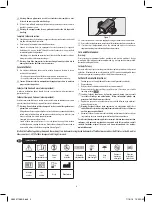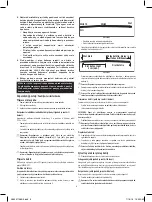
1
Pressure Injectable
Peripherally Inserted Central Catheter (PICC) Product
Rx only.
Indications:
The Pressure Injectable PICC is indicated for short or long term peripheral access to
the central venous system for intravenous therapy, blood sampling, infusion, pressure
injection of contrast media and allows for central venous pressure monitoring.
The maximum pressure of pressure injector equipment used with the pressure
injectable PICC may not exceed 300 psi (2068.4 kPa). The maximum pressure injection
flow rate ranges from 4 mL/sec to 6 mL/sec. Refer to the product specific labeling
for the maximum pressure injection flow rate for the specific lumen being used for
pressure injection.
Contraindications:
The Pressure Injectable PICC is contraindicated wherever there is presence of device related
infections or presence of thrombosis in the intended insertion vessel or catheter pathway.
Clinical assessment of the patient must be completed to ensure no contraindications exist.
See additional labeling for product specific contraindications.
General Warnings and Cautions
Warnings:
1.
Sterile, Single use: Do not reuse, reprocess or resterilize.
Reuse of device creates a potential risk of serious injury and/
or infection which may lead to death.
2.
Read all package insert warnings, precautions and
instructions prior to use. Failure to do so may result in severe
patient injury or death.
3.
Do not place catheter into or allow it to remain in the right
atrium or right ventricle to reduce risk of patient injury. X-ray
exam or other method must show catheter tip located in
lower 1/3 of the Superior Vena Cava (SVC), in accordance with
institutional policies and procedures.
4.
Clinicians must be aware of potential entrapment of
the guidewire by any implanted device in circulatory
system. It is recommended that if patient has a circulatory
system implant, catheter procedure be done under direct
visualization to reduce risk of guidewire entrapment.
5.
Do not use excessive force when introducing guidewire,
peel-away sheath over tissue dilator, or tissue dilator as
this can lead to venospasm, vessel perforation, bleeding, or
component damage.
6.
Passage of guidewire into the right heart can cause
dysrhythmias, and a perforation of vessel, atrial or
ventricular wall.
7.
Do not apply excessive force in placing or removing catheter
or guidewire. Excessive force can cause component damage
or breakage. If damage is suspected or withdrawal cannot be
easily accomplished, radiographic visualization should be
obtained and further consultation requested.
8.
Use only lumen(s) labeled “Pressure Injectable” for pressure
injection to reduce risk of catheter failure and/or patient
complications. Refer to the Arrow PICC Pressure Injection
Information card for pressure injection instructions and
information.
9.
Do not secure, staple and/or suture directly to outside
diameter of catheter body or extension lines to reduce risk of
cutting or damaging the catheter or impeding catheter flow.
Secure only at indicated stabilization locations.
10.
Clinicians should be aware that slide clamps may be
inadvertently removed. Air embolism can occur if air is
allowed to enter a central venous access device or vein.
Do not leave open needles, sheaths, or uncapped, unclamped
catheters in central venous puncture site. Use only securely
tightened Luer-Lock connections with any central venous
access device to guard against inadvertent disconnection.
11.
Infusion of incompatible drugs through adjacent exit ports
may cause precipitation and/or occlusion.
12.
Clinicians must be aware of clinical conditions that may limit
use of PICCs including, but not limited to:
•
dermatitis, cellulitis, and
burns at or about the
insertion site
•
previous ipsilateral
venous thrombosis
•
radiation therapy at or
about insertion site
•
contractures,
mastectomy, surgical
procedures
•
potential use for AV
fistula
13.
Clinicians must be aware of complications associated with
PICCs including, but not limited to:
•
cardiac tamponade
secondary to vessel,
atrial, or ventricular
perforation
•
pleural (i.e.,
pneumothorax) and
mediastinal injuries
•
air embolism
•
catheter embolism
•
catheter occlusion
•
bacteremia
•
septicemia
•
extravasation
•
thrombosis
•
inadvertent arterial
puncture
•
nerve injury/damage
•
hematoma
•
hemorrhage
•
fibrin sheath formation
•
exit site infection
•
vessel erosion
•
catheter tip malposition
•
dysrhythmias
•
SVC syndrome
•
phlebitis
Cautions:
1.
Do not alter the catheter except as instructed. Do not alter
the guidewire or any other kit/set component during
insertion, use or removal.
2.
Procedure must be performed by trained personnel well
versed in anatomical landmarks, safe technique and
potential complications.
3.
Use standard precautions and follow established
institutional policies and procedures.
4.
Some disinfectants used at catheter insertion site contain
solvents which can weaken the catheter material. Alcohol,
acetone, and polyethylene glycol can weaken the structure
of polyurethane materials. These agents may also weaken
the adhesive bond between catheter stabilization device
and skin.
•
Do not use acetone on catheter surface.
•
Do not use alcohol to soak catheter surface or allow
alcohol to dwell in a catheter lumen to restore catheter
patency or as an infection prevention measure.
A06041108B0.indb 1
7/18/16 10:33 AM


































